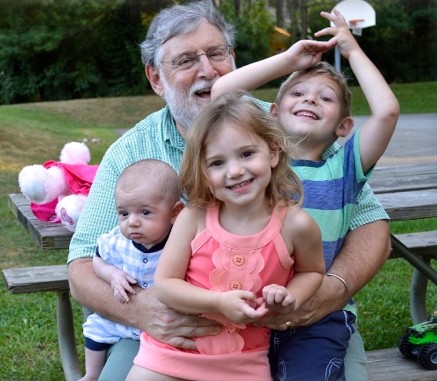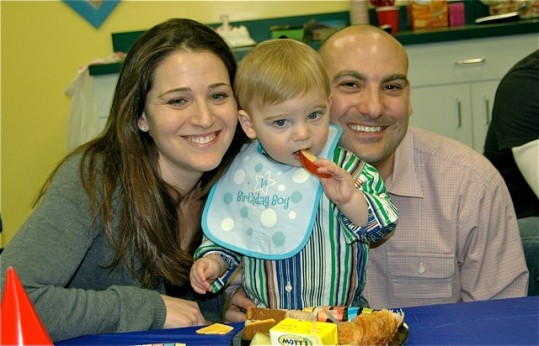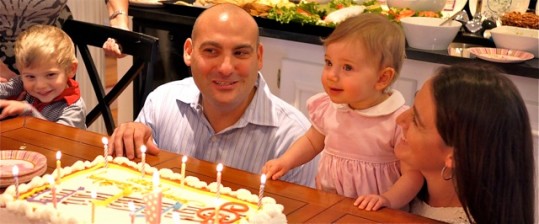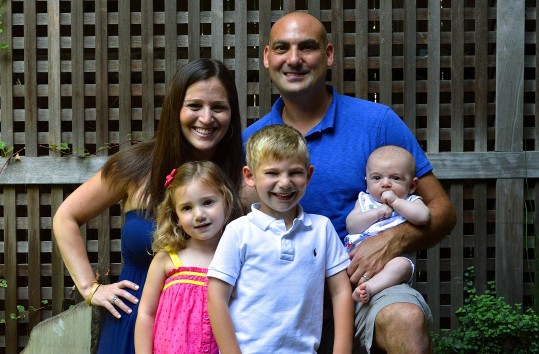
So in a moment of weakness, my wife Ellen and I agreed to move into my elder daughter (Annie) and son-in-law’s (Danny) house a couple of weekends ago to take care of the three kids for 24 hours. Annie was surprising Danny for his upcoming 40th birthday with a night ‘on the town’ in DC with their friends.
Promises have a way of coming due, and so we kept our word.
As you can see from the picture above, the kids are getting to be a handful. But we all survived, and I don’t even have my usual list of ‘disasters’ to write about.
But I did get to thinking about the differences between one child, two, and three.
I’ve always felt that two kids were not just one more than one kid. And that three kids simply multiplies the possibilities – joys, opportunities, challenges, etc…
For example, with just one kid, there are only four possible combinations (groupings) that have to learn to get along: Annie + Danny + Eli (1); Annie + Danny vs Eli (2); Annie + Eli vs Danny (3); and Danny + Eli vs Annie (4).
When you add another child, Abby, for example, the combinations, groupings jump to 8.
When you add a third child, Ryan, for example, the combinations jump to 16.
(Not being sure of my math skills, I checked with my numbers’ cruncher (btilis) whose first response was a request for more information (could there only be two separate groups or could there also be a group of all individuals). Then he responded, “I really don’t know. I tried writing them out and can’t come up with a pattern (my brain is fried). The multiple teams really throws things off for me.”
(So I tried to simplify it for him (and he’s the numbers guy, not me), saying just groups, no individuals. His response, I’ll spare you the details, matched mine from above if you also allow for one grouping of all the individuals.)
Bottom line: the difference in the combinations of groups jumps from 4 to 8 to 16, which are multiples, confirming my instinct that having two or three kids is not like adding one or two more. Its a geometric increase, not an arithmetic one.
But then any of you who have more than one kid certainly doesn’t need this posting to confirm that.
Pictures probably say it better:
1. With one child, there are only four possible groups (groupings) that have to learn to get along:

2. With two children, that jumps to eight:

3. With three, the combinations double to 16:



Micah Sifry said:
Chinese proverb: “One is like none; two is like ten.”
Lydia said:
Or, as one of my basketball-inclined friends once put it: “at two you’re still man-to-man defense. At three you have to move to zone.”
Carrie said:
3 children out number 2 parents so grandparents become more necessary